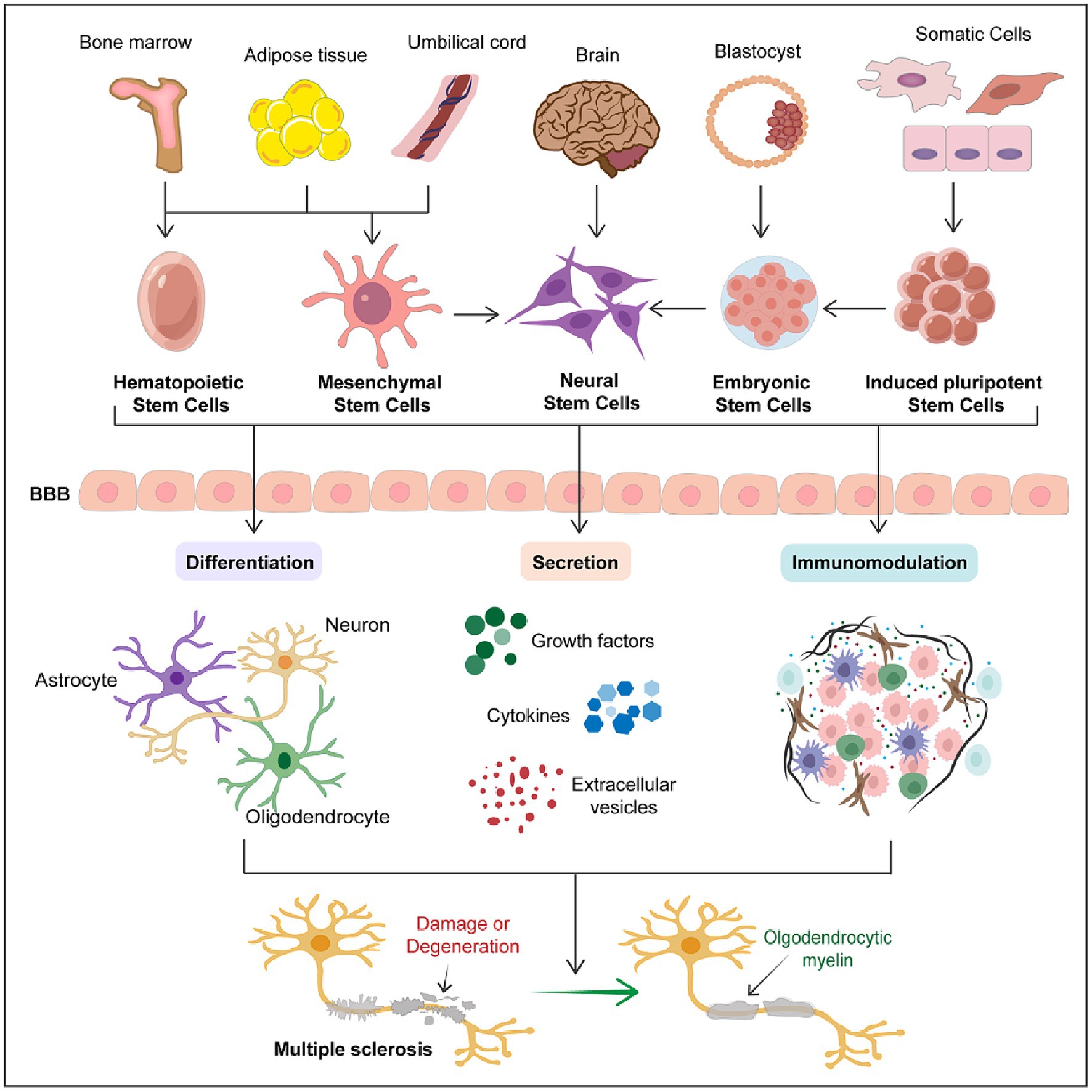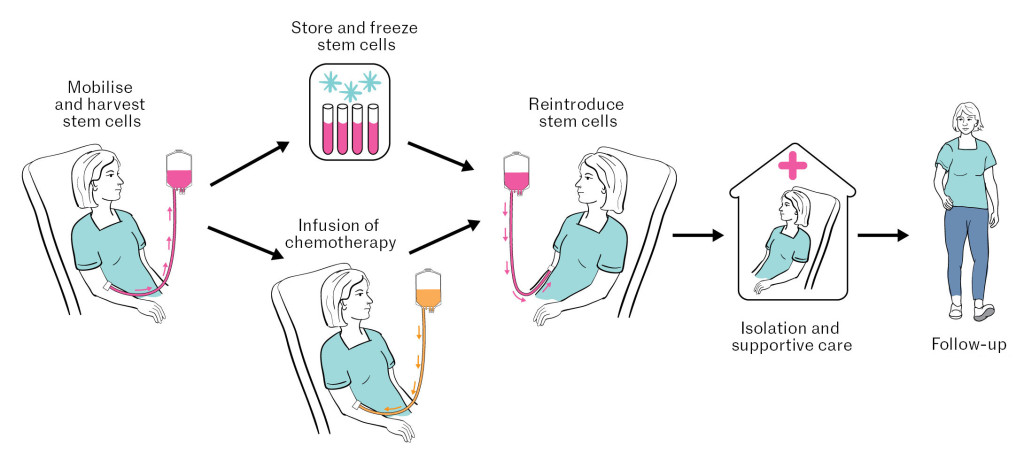Indicators on Regenerative Medicine For Multiple Sclerosis You Need To Know
Wiki Article
Unknown Facts About Regenerative Medicine For Multiple Sclerosis
Table of ContentsUnknown Facts About Regenerative Medicine For Multiple SclerosisRegenerative Medicine For Multiple Sclerosis - An OverviewRegenerative Medicine For Multiple Sclerosis Fundamentals Explained5 Simple Techniques For Regenerative Medicine For Multiple SclerosisWhat Does Regenerative Medicine For Multiple Sclerosis Do?An Unbiased View of Regenerative Medicine For Multiple SclerosisRegenerative Medicine For Multiple Sclerosis for Dummies
The mesenchymal stem cells transplanted throughout stem cell treatment can split and develop to develop new cells that can take the location of the damaged cells of the worried cells. This could restore neurological functions in patients with this problem. These benefits of stem cell treatment are further supported by the ability of MSCs to promote recovery.Clients with multiple sclerosis are usually treated with mesenchymal stem cells. These are multipotent stem cells that have the ability to separate and mature to develop a large variety of cell enters the body. Once transplanted, these stem cells can create to create healthy nerve cells therefore sustaining the regeneration of the broken tissues of the worried system.
Once transplanted, the stem cells migrate to locations of swelling or damage within the central nerve system (CNS). They are normally brought in to the websites of injury where the immune system is attacking the myelin sheath, the safety treatment of nerve fibers. The stem cells work by advertising the fixing and regrowth of harmed myelin, potentially recovering feature to influenced nerve cells.
Regenerative Medicine For Multiple Sclerosis Can Be Fun For Everyone
Stem Cell Research on MS The National Numerous Sclerosis Society, along with other companies, is proactively moneying and sustaining study into mesenchymal stem cell treatment for multiple sclerosis to explore their possible and enhance treatment methods. The objective is to develop more secure and a lot more effective methods to use stem cells in treating MS.
Regenerative Medicine For Multiple Sclerosis - An Overview
Here are below from patients of the Swiss Medica clinic. The patient traveled from Romania seeking treatment for MS after listening to positive feedback about stem cell therapy for the illness.Get a totally free online examination to find out how stem cells will certainly benefit your instance, and what are the period and price of the treatment. Clinical Consultant, Swiss Medica doctor Lemus, H. N., Warrington, A. E., & Rodriguez, M. (2018 ). Multiple Sclerosis: Devices of Disease and Techniques for Myelin and Axonal Fixing.
The Of Regenerative Medicine For Multiple Sclerosis

Stem cells are cells in the body that can grow into specialized cells that offer a details function. They are likewise able to create exact duplicates of themselves. There are two major types of stem cells: beginning stem cells and adult stem cells. are found in the developing embryo and can develop into most kinds of cells in the body.
are discovered in some grown-up tissues and organs consisting of the bone marrow, skin, blood, and mind. Adult stem cells are not as adaptable as beginning stem cells and are therefore extra minimal in regards to the sorts of cells they develop right into. The distinct residential or commercial properties of stem cells provide promise for brand-new therapies that can slow/halt MS illness view publisher site activity and repair work tissue damages in the central nerve system.
About Regenerative Medicine For Multiple Sclerosis

The treatment entails gathering stem cells from a person's very own (autologous) bone marrow. The individual is then treated with chemotherapy to diminish the immune system and stem cells are reintroduced right into the body where they develop right into new, healthy and balanced immune cells - Regenerative Medicine for Multiple Sclerosis. Stem cells can be injected into the body in various means

In 2000, the MS Culture of Canada and MS Scientific Study Foundation funded a professional trial including HSC transplants, led by Drs. Mark Freedman and Harry Atkins from the Ottawa Health Center Research Study Institute/University of Ottawa. The aHSC therapy available in Canada is a therapy that utilizes high-dose chemotherapy, also called conditioning.

The Best Strategy To Use For Regenerative Medicine For Multiple Sclerosis
Neural stem cells (NSC) are found in the mind and can grow into numerous kinds of mind cells consisting of neurons, oligodendrocytes, and astrocytes. NSCs may offer to repair or shield the brain and regulate the body immune system. Early scientific trials in non-human primates showed that therapy with NSCs profited the development of MS-like disease in animal versions.The outcomes from these safety studies are favorable for future stem cell and regenerative medication treatments in MS. Future professional tests (phase 2 and 3) with bigger varieties of participants and controls are essential to analyze the efficiency of this therapy for MS. As demonstrated by the instances above, there is a vast range of study happening that will certainly provide additional Continued responses concerning the usage of stem cells to deal with MS.
Stem cell treatment is taken into consideration risk-free, but, like any clinical treatment, it lugs some dangers, such as short-lived swelling or discomfort at the shot site. Significant side impacts are rare when done by certified professionals.
What Does Regenerative Medicine For Multiple Sclerosis Mean?
Numerous sclerosis (MS) is a chronic condition of the main nerves that influences the brain and spine. It is identified by the destruction of myelin, a substance that covers nerve fibers, bring about disruptions in interaction in between the brain and the remainder of the body. Signs and symptoms can vary widely and include muscular tissue weakness, vision problems, inequality, and exhaustion.Numerous sclerosis is defined by the immune system incorrectly assaulting the protective sheath (myelin) that covers nerve fibers, creating interaction concerns in between the brain and the rest of the body. The condition can lead to the wear and tear or irreversible damages of nerves. Signs and symptoms differ widely among people and can include fatigue, wheelchair problems, discomfort, and cognitive modifications.
Report this wiki page